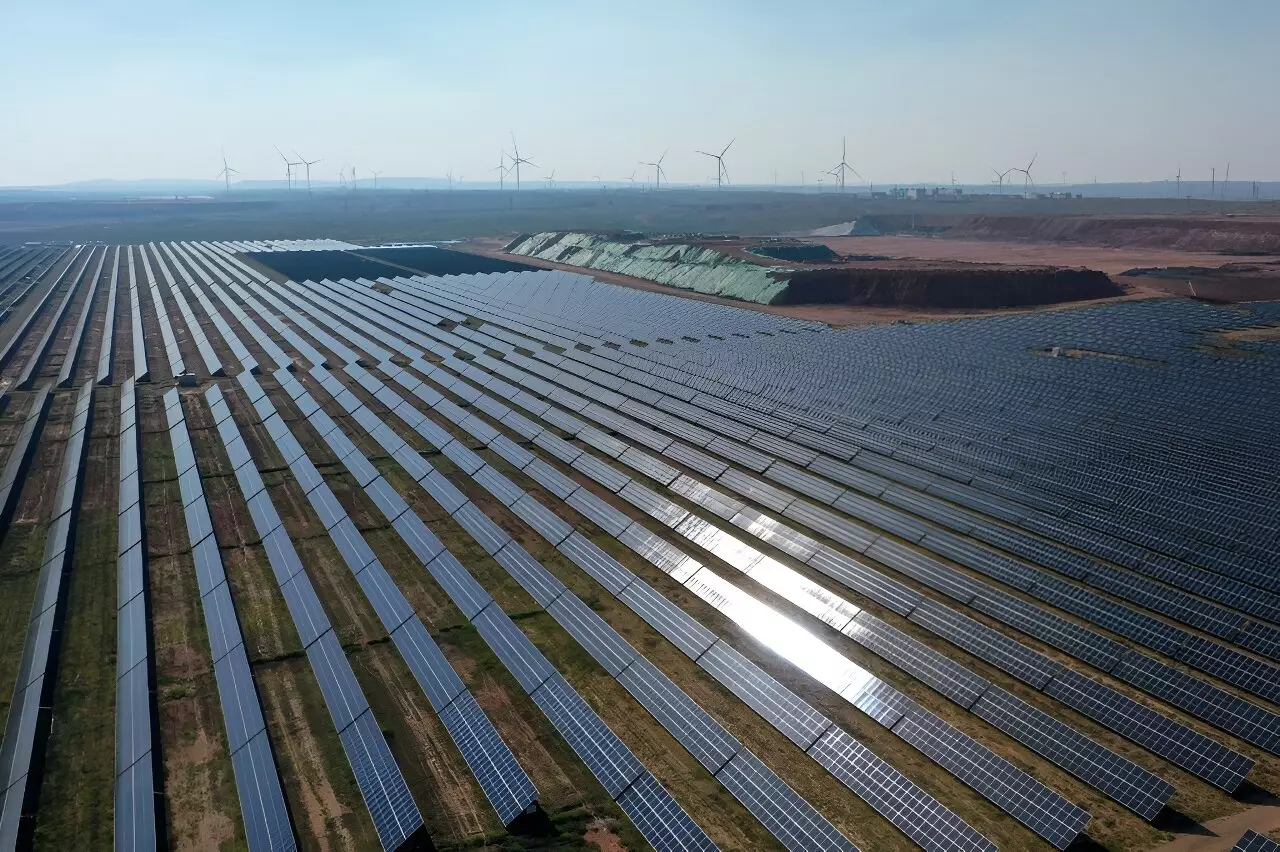China, often recognized as the largest emitter of greenhouse gases globally, has made considerable strides toward a more sustainable energy future. Recent findings indicate that a significant portion of its energy consumption—approximately 26.4%—now stems from clean energy sources. This statistic, highlighted in a white paper released last Thursday, reflects a dramatic increase from 15.5% a decade ago, signaling a pivotal shift in the nation’s approach to energy. However, while the numbers are encouraging, the overarching narrative is far more complex.
As China embarks on an ambitious quest to transition its economy, factors such as rapid growth in wind and solar capacity have been critical in this development. Over the last decade, these sectors have seen an expansive growth rate, expanding their capacity by tenfold. This transformation not only underscores China’s commitment to renewables but positions the nation as a global leader in this arena. Since 2013, it has accounted for over 40% of the world’s additions to renewable energy capacity. The crux of this success stems from strategic investments and policy initiatives that aim to fortify green energy advancements while addressing climate change issues.
Despite showcasing significant progress, China’s commitment to peak carbon emissions by 2030 and achieve net-zero emissions by 2060 underscores an essential paradox. While global observers commend China’s shift away from coal and other harmful energy sources, there remains skepticism regarding the sufficient urgency of these efforts. The recent white paper celebrated “historic breakthroughs,” yet the country has often refrained from endorsing even more aggressive international climate targets, leading to questions about the authenticity of its commitment.
Furthermore, the stakes are high as the nation navigates the challenges of balancing economic growth with environmental responsibilities. China must tackle issues related to energy wasting due to mismatched developments within the renewable sector. Such inefficiencies could thwart its overarching goals and diminish the potential benefits of its green energy initiatives.
Industry Challenges and Financial Constraints
The path toward sustainability is not without its hurdles. The turbulence within the solar energy sector has led to significant financial distress for some Chinese firms, ultimately challenging the viability of continued expansion in this domain. The struggle against the financial headwinds highlights a pressing need for robust policy frameworks that support these companies through their transformative phases.
Moreover, the government must ensure that the rapid expansion of capacity does not outpace the infrastructure necessary for its effective utilization. This concern is vital, as wasted energy represents not only a financial loss but also an impediment to achieving emission reduction goals.
The Road Ahead
While China is undeniably on a green trajectory, the road ahead requires an unwavering commitment to not just renewables but also a resilience against the economic and social implications of this transition. Realigning its energy policies to accommodate a sustainable future demands continuous investment and innovative solutions to manage the complexities inherent within its vast energy landscape. Balancing immediate economic needs with long-term ecological goals will define China’s role in the global fight against climate change.

